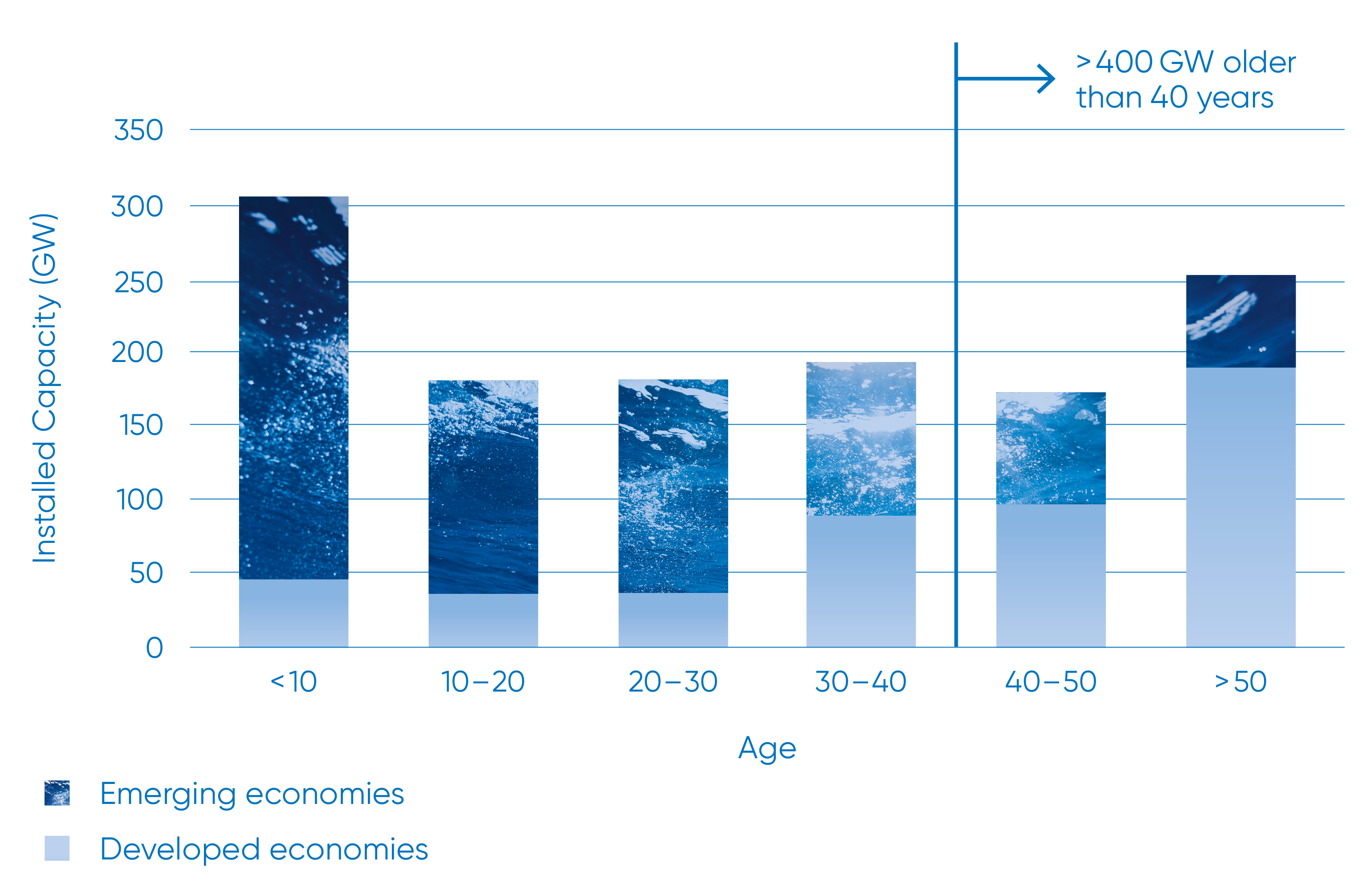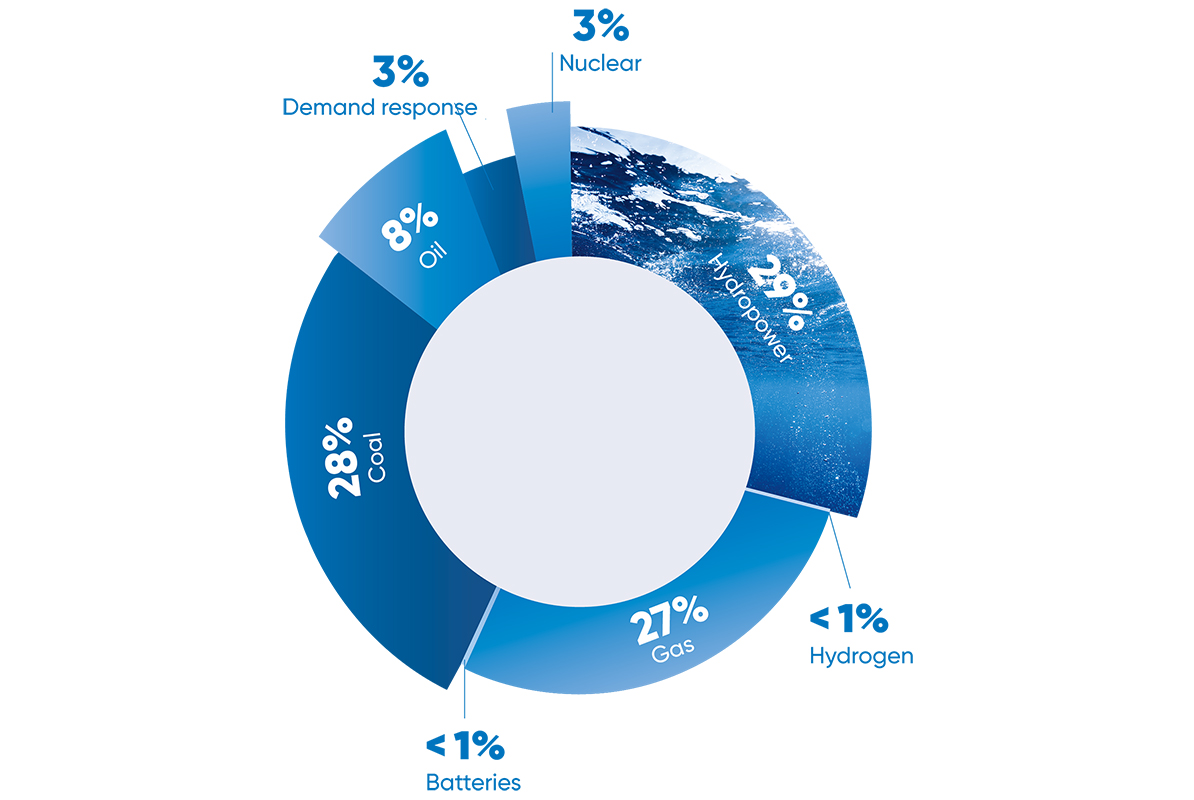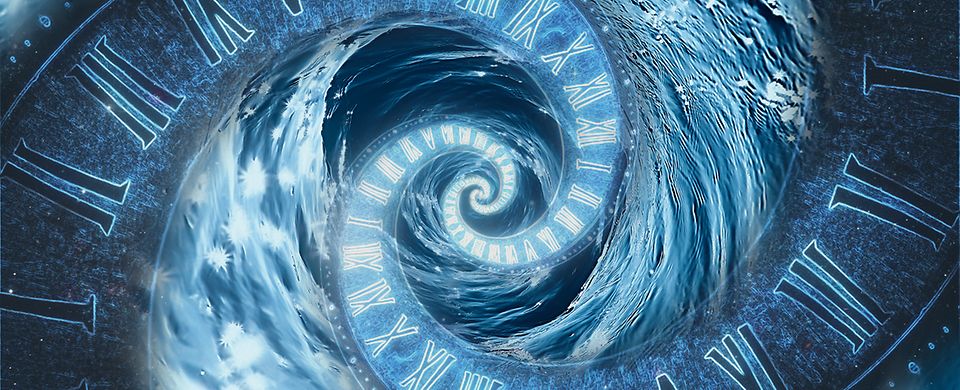"To secure our world for future generations it is crucial to put hydropower squarely back on the energy and climate policy agenda."
Dr Fatih Birol, Executive Director, International Energy Agency
Using water to produce energy is an old story, an idea that stretches back millennia, but it wasn’t until the middle of the 20th century that the real renaissance of hydropower came about.
Even though the 1960s and 1970s are relatively recent history in the epic chronicles of hydropower, many of those power plants are more than 50 years old and are still operating. Indeed, the vast majority of the earth’s hydroelectricity is generated at power plants that are already many decades old.
About 40% of all the world’s hydropower plants were first commissioned more than 40 years ago, with nearly half of the global hydropower capacity more than 30 years old.
Hydropower installations are clearly very long-lived assets but wear and tear mean that even hydropower equipment begins to show its age eventually. This can affect plant efficiency, performance and reliability, which can in turn have impacts on station output, potential revenues and even safety.
Furthermore, hydropower does not exist in isolation. The world is changing, and hydropower assets must also change if they are still to play their part. Hydropower is by far the world’s largest source of renewable electricity, producing more than half of all renewable power generation and about 16% of total generation worldwide. Hydropower is not only the world’s largest contributor to renewable energy, but also a significant enabler of other, more volatile renewables like wind and solar.
Dr Fatih Birol, Executive Director, International Energy Agency
As the world accelerates the clean energy transition and turns away from fossil fuels, hydro is operating in a system that is increasingly dominated by those volatiles. This can create challenges for transmission system operators who need to maintain grid stability and places additional demands on hydropower assets as they are deployed in ways they were never designed for. Reliable, predictable, and flexible, hydropower lends itself to function as a balancing energy source, able to quickly respond to fluctuations in supply and demand to keep the grid stable.
Hydro plants operating as spinning-reserve or fast-response capacity are critical in the modern era and this demand is only likely to get more important as we switch to a 100% clean energy world.
However, these new demands, such as more start-stop cycles and part load operation, can accelerate fatigue of equipment, in addition to wear and tear from abrasion and corrosion, for example. Furthermore, the growing calls for more sustainable energy sources involve environmental requirements too, with fish-friendly turbines and oil-free turbine runner hubs also increasingly in demand.
It’s clear then that while much attention is focused on greenfield hydropower capacity, there is also a significant need to refurbish and upgrade a large portion of the existing global fleet.

Rehabilitation, modernization, and upgrading of installed hydropower equipment offers a host of benefits. Refurbishing existing assets by repairing and replacing components can extend the operational lifespan far beyond the original specified design. Typically, such a process maximizes potential revenue from an asset with a significantly reduced capital outlay. The efficiency of turbines and generators has significantly improved over the years. Upgrading a 40-year-old turbine runner could easily add 5% to the headline efficiency figure and an even bigger increase to annual revenues by raising peak capacity. Upgrading a plant’s performance is therefore possible and very cost-effective.
There are also opportunities to increase generation by modernizing existing assets to make them more compatible with today’s energy system and modern requirements. This is particularly important when considering the need for greater flexibility in operations in response to variable renewables or other emerging market demands.
Components like stationary parts of turbines or other fixed elements like penstocks generally age slowly and are capable of maintaining effective operations for many decades. High voltage electrical equipment like cables, transformers and substations also age slowly but at a slightly higher rate than other stationary components. Conversely, instrumentation and control equipment rapidly become obsolete given the digital sector is experiencing an ever-faster technology development. Even relatively new equipment can quickly become out of date. This is especially true when considering cybersecurity, an area that absolutely must stay up to date.
By applying such digitalization programs, not only security, but the flexibility and overall efficiency of a hydropower plant can be significantly optimized. This goes hand in hand with adopting the latest service, operations, and maintenance concepts, such as predictive maintenance based on the latest instrumentation and data analysis best practices.
Overall, modernization can greatly improve overall efficiency, reduce operational expenditures, extend lifetimes, and make hydropower plants flexible and fit for the future.

Source: IHA & IEA, 2019
ANDRITZ is well known as a leading global supplier of hydropower equipment and services — “from water-to-wire” — as well as rotating machinery for a diverse range of other industries. With about 7,000 employees worldwide and more than 65 locations, ANDRITZ Hydro is a global company that is always local. Since its founding in the middle of the 19th Century, ANDRITZ Hydro has rehabilitated and modernized more than 10,000 hydropower units worldwide. This experience covers all types and sizes of hydropower machinery from 1 MW up to 800 MW and across every possible range of heads and flow rates. As part of its commitment to the industry, ANDRITZ Hydro has more than 50 service and rehab locations distributed around the globe. This framework of locations supports our goal of achieving proximity and reactivity while guaranteeing the rapid and smooth transfer of skills and information for even the most challenging modernization scheme.
Among the refurbishment projects that ANDRITZ has undertaken lately is Grand Coulee John W. Keys III on the Columbia River in Washington, USA. ANDRITZ is conducting a major automation modernization project installing new digital excitation systems, unit controls and governor systems for all six pumping units and the six pump-generating units. The existing pump units were installed in the early 1950s and the pump-generating units in the late 1970s.
More recently, a smaller automation upgrade project was announced in Norway at the Årlifoss and Grønvollfoss run-of-river plants dating back to 1915 and 1933, respectively. In 2020, ANDRITZ was awarded an automation rehabilitation order for both hydropower plants. More on this project.
In Wehr, Germany, another rehabilitation project saw the installation of the world’s most powerful horizontal air-cooled motor generator with a challenging design following a failure of the original water-cooled machine that had been installed in the 1970s. This pumped storage plant provides crucial grid balancing services, and the owners wanted a unit that was capable of withstanding a large number of load changes.
More details on this ground-breaking project.
And, in Mexico, another major rehabilitation contract award has come from the state-owned power utility CFE. This EUR 600 million refurbishment covers nine power plants with a combined capacity of more than 4.3 GW. The modernization will increase the rated capacity of these projects by 248 MW, well over 5%.
More on this project.
Jebba, Nigeria – Affordable energy for generations
Other service and rehabilitation projects covered in this issue include Jebba in Nigeria, where ANDRITZ is rehabilitating two generating units to extend their lifetime for the next 40 years.
Additional details on the refurbishment of this 578 MW plant can be found here.
ANDRITZ is also executing a complete overhaul, modernization and uprating for one of the first run-of-river plants on the Rhine, which has been in operation in Switzerland since 1931. More on this project.
We take a look at a project in Brazil where the largest overhaul of Francis turbines ANDRITZ has ever undertaken is now complete with the modernization and rehabilitation of the Foz do Areia plant on the Paraná River. More details on the project.
ANDRITZ is also uprating one of the largest pumped storage plants in Europe, the Dinorwig plant in Wales, UK. We report on a project to supply six new spherical valves to improve the safety and availability of the famous ‘Electric Mountain’ pumped storage plant. More on this project.
These are just a few of the many refurbishment references that ANDRITZ has under its belt but serve to illustrate the breadth of our experience and our competence as a leader in the field.

Source: IEA 2021 – Net Zero by 2050: A Roadmap for the Global Energy Sector "Hydropower plants currently make up almost 30% of the global flexible supply capacity based on hour-to-hour ramping needs."
With the pressing and urgent challenge of climate change there is no greater priority than the energy transition, and hydropower is a vital part of that transformation. Worldwide, hydropower already makes a huge clean energy contribution, but as an enabler of other renewables, hydropower is unsurpassed. A tried and tested technology, its role in helping to meet modern grid requirements and providing large-scale energy storage capabilities cannot be overstated. It’s therefore critical that we maximize the global hydropower capacity, not just with new builds but by modernizing the existing fleet. Though much of the installed hydropower capacity is already decades old, through modernization and refurbishment even the oldest hydropower plant can sometimes perform better than new, ensuring hydropower’s vital role in our clean energy future.
Authors: David Appleyard, journalist and writer; Peter Stettner and Marie-Antoinette Sailer


